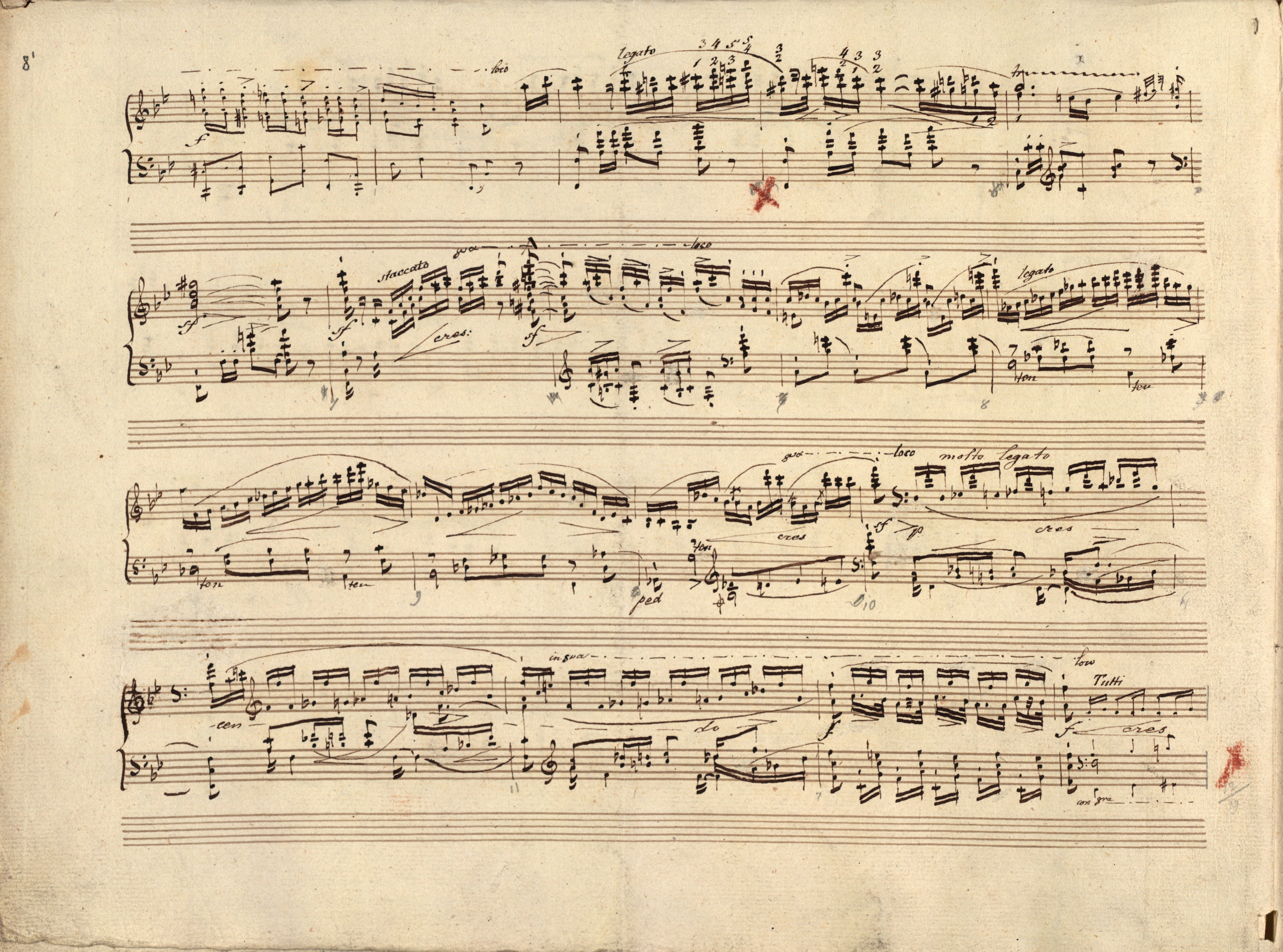



The short  mark may be considered an accent associated with the initial
mark may be considered an accent associated with the initial  or as a diminuendo hairpin, which, in this context, practically does not influence the meaning of this mark. On the other hand, placing it under the 1st f semiquaver, as it was performed in GE (→FE,EE), must be contrary to the notation of A and Chopin's intention. The differences in the length of the mark in individual editions most probably correspond to the different interpretations of the engravers: the ones who considered it an accent, inserted a short accent (EE and FESB), while diminuendo took the form of a long accent, which is present in GE (→FE1→FE2).
or as a diminuendo hairpin, which, in this context, practically does not influence the meaning of this mark. On the other hand, placing it under the 1st f semiquaver, as it was performed in GE (→FE,EE), must be contrary to the notation of A and Chopin's intention. The differences in the length of the mark in individual editions most probably correspond to the different interpretations of the engravers: the ones who considered it an accent, inserted a short accent (EE and FESB), while diminuendo took the form of a long accent, which is present in GE (→FE1→FE2).
Compare the passage in the sources »
category imprint: Differences between sources
issues: Long accents, Inaccuracies in GE, Inaccuracies in FE, EE inaccuracies
notation: Articulation, Accents, Hairpins

